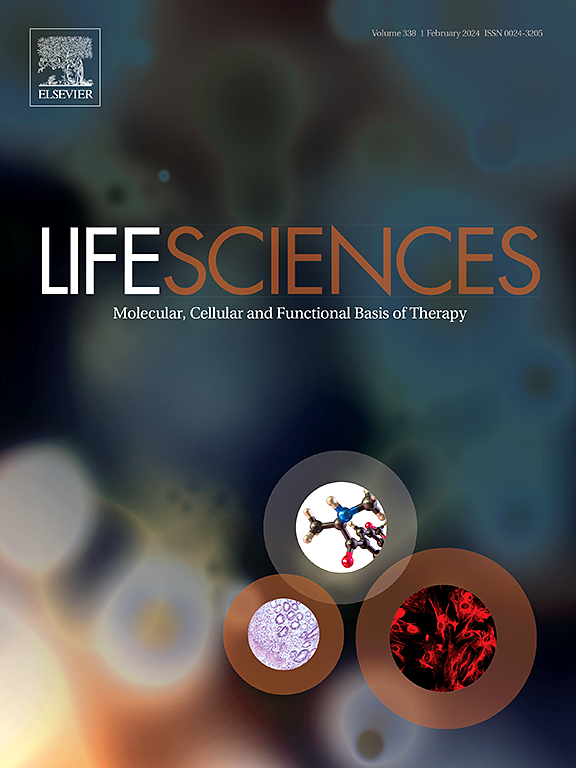肠道微生物群对海湾战争疾病易感性的贡献:小鼠模型的研究结果。
IF 5.2
2区 医学
Q1 MEDICINE, RESEARCH & EXPERIMENTAL
引用次数: 0
摘要
目的:鉴于有证据支持肠道微生物组在海湾战争疾病(GWI)病理学中的重要作用,我们试图在小鼠模型中研究肠道微生物组对 GWI 易感性的贡献。我们还旨在确定与疾病易感性相关的细菌类群和微生物衍生代谢物:主要方法:口服吡啶斯的明(PB)的雄性小鼠和对照组在治疗后 8 周接受了 GWI 症状评估。对堪萨斯标准进行了调整,以评估与以下领域相关的行为:胃肠道改变、疼痛、情绪、认知功能、皮肤和呼吸障碍。经 PB 治疗的受试者被分为易感人群(GWI-S)和恢复人群(GWI-R)。通过分析 16S rRNA 基因评估肠道微生物组的状况,并使用代谢组学工具评估微生物衍生代谢物:我们的研究结果表明,将堪萨斯标准应用于 PB 处理过的小鼠的行为结果会导致约 35% 的 GWI 易感率,与人类报告的易感率相似。与对照组小鼠和 GWI-R 小鼠相比,GWI-S 受试者肠道微生物组的组成和结构在 8 周时有所不同,但在 PB 处理之前,GWI-R 和 GWI-S 小鼠的微生物群落结构也存在差异。GWI-S 受试者表现出不同的细菌类群和微生物代谢物丰富度模式:据我们所知,这是第一份临床前报告,其中描述了对 GWI 的易感性分层及其与肠道微生物组的关联。鉴于对 GWI 的易感性所代表的研究难题,应考虑使用可进一步深入了解这一复杂因素的工具。本文章由计算机程序翻译,如有差异,请以英文原文为准。
Contributions of the gut microbiota to Gulf War Illness susceptibility: Findings from a mouse model
Aims
In light of the evidence supporting a significant role of the gut microbiome in Gulf War Illness (GWI) pathology, we sought to examine its contribution to GWI susceptibility in a mouse model. We also aimed to identify bacterial taxa and microbially-derived metabolites associated with disease susceptibility.
Main methods
Male mice receiving pyridostigmine bromide (PB) orally, and controls were evaluated for symptoms of GWI at 8 weeks post-treatment. The Kansas criteria were adapted to assess behaviors associated with the following domains: gastrointestinal alterations, pain, mood, cognitive function, skin and respiratory disturbances. PB-treated subjects were classified into susceptible (GWI-S) or resilient (GWI-R). The status of the gut microbiome was assessed via analyses of the 16S rRNA gene and microbial-derived metabolites were evaluated with metabolomics tools.
Key findings
Our results indicate that application of the Kansas criteria to behavioral outcomes in PB-treated mice resulted in a GWI susceptibility rate of ~35 %, similar to the one reported in humans. The composition and structure of the gut microbiome was different in GWI-S subjects compared to both control and GWI-R mice at 8 weeks but differences in microbial community structure were observed prior to PB treatment between GWI-R and GWI-S mice. GWI-S subjects exhibited a pattern of differentially abundant bacterial taxa and microbial metabolites.
Significance
To our knowledge, this is the first preclinical report in which a stratification by susceptibility to GWI and its association with the gut microbiome is described. In light of the research conundrum that vulnerability to GWI represents, the use of tools that could provide further insight into this complex factor should be considered.
求助全文
通过发布文献求助,成功后即可免费获取论文全文。
去求助
来源期刊

Life sciences
医学-药学
CiteScore
12.20
自引率
1.60%
发文量
841
审稿时长
6 months
期刊介绍:
Life Sciences is an international journal publishing articles that emphasize the molecular, cellular, and functional basis of therapy. The journal emphasizes the understanding of mechanism that is relevant to all aspects of human disease and translation to patients. All articles are rigorously reviewed.
The Journal favors publication of full-length papers where modern scientific technologies are used to explain molecular, cellular and physiological mechanisms. Articles that merely report observations are rarely accepted. Recommendations from the Declaration of Helsinki or NIH guidelines for care and use of laboratory animals must be adhered to. Articles should be written at a level accessible to readers who are non-specialists in the topic of the article themselves, but who are interested in the research. The Journal welcomes reviews on topics of wide interest to investigators in the life sciences. We particularly encourage submission of brief, focused reviews containing high-quality artwork and require the use of mechanistic summary diagrams.
 求助内容:
求助内容: 应助结果提醒方式:
应助结果提醒方式:


